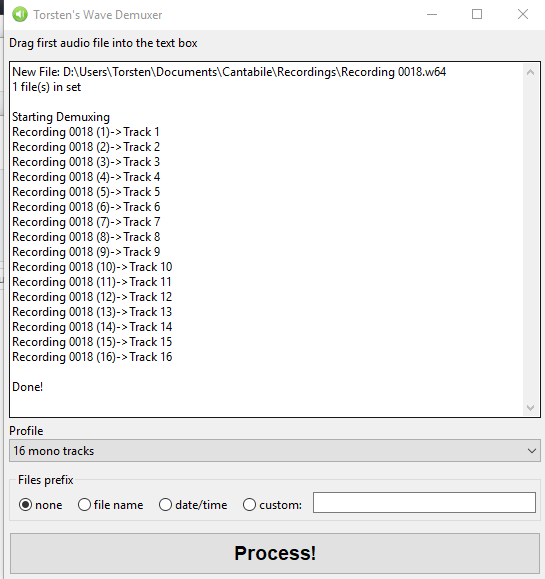Hey Terry,
I’ve built a quick and dirty experimental version that will work on .w64 files - but only with an older version of sox (which does work with w64 files). So get version 14.4.0 of SOX, download my experimental version here and take a look at the original thread here to find out how to configure AudioDemuxer to point to the right version of SOX.
I’ve tried it with a quick experimental w64 audio file from Cantabile - seemed to demux it all right. Can you see if it works for you?
Cheers,
Torsten
